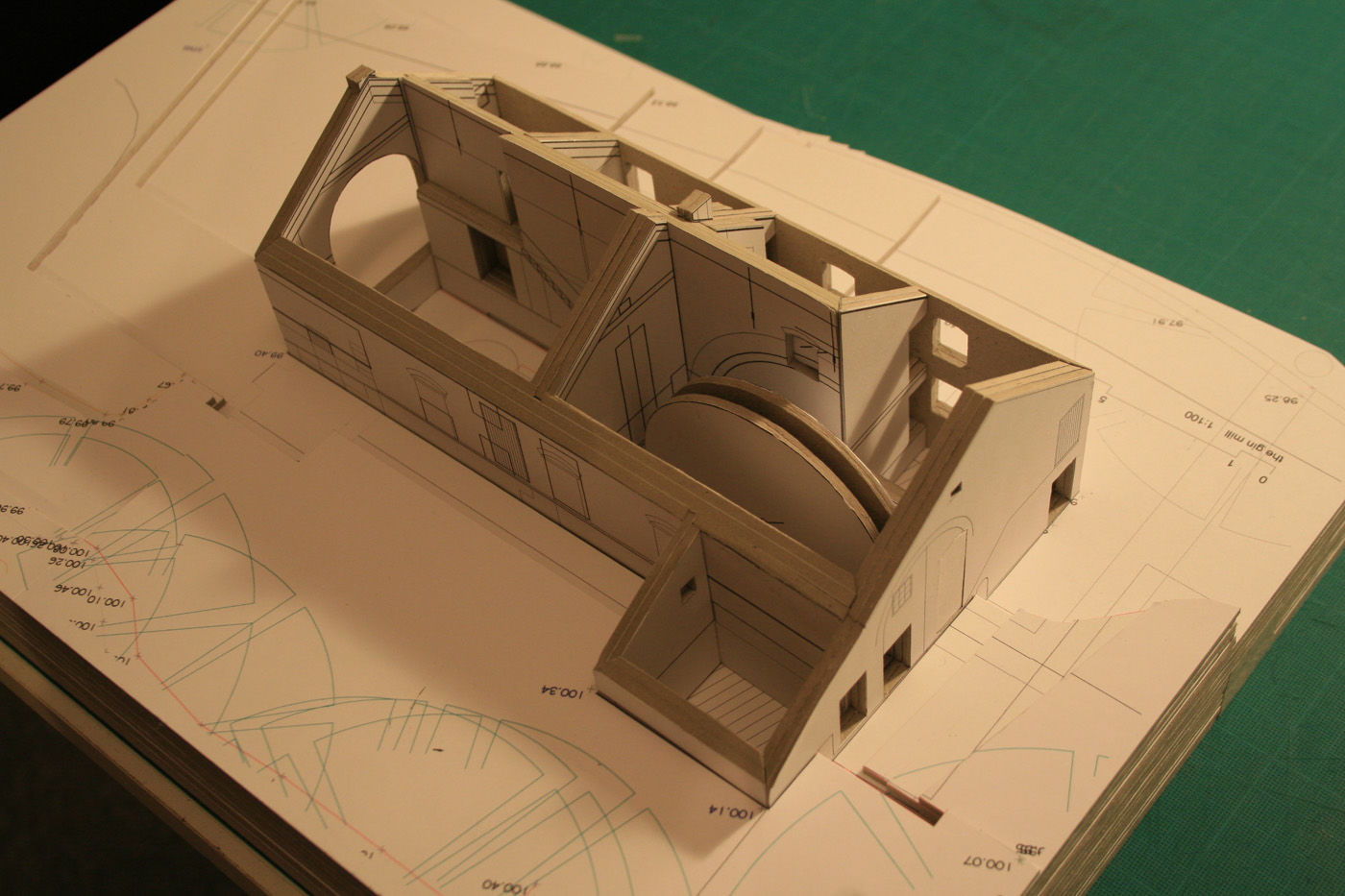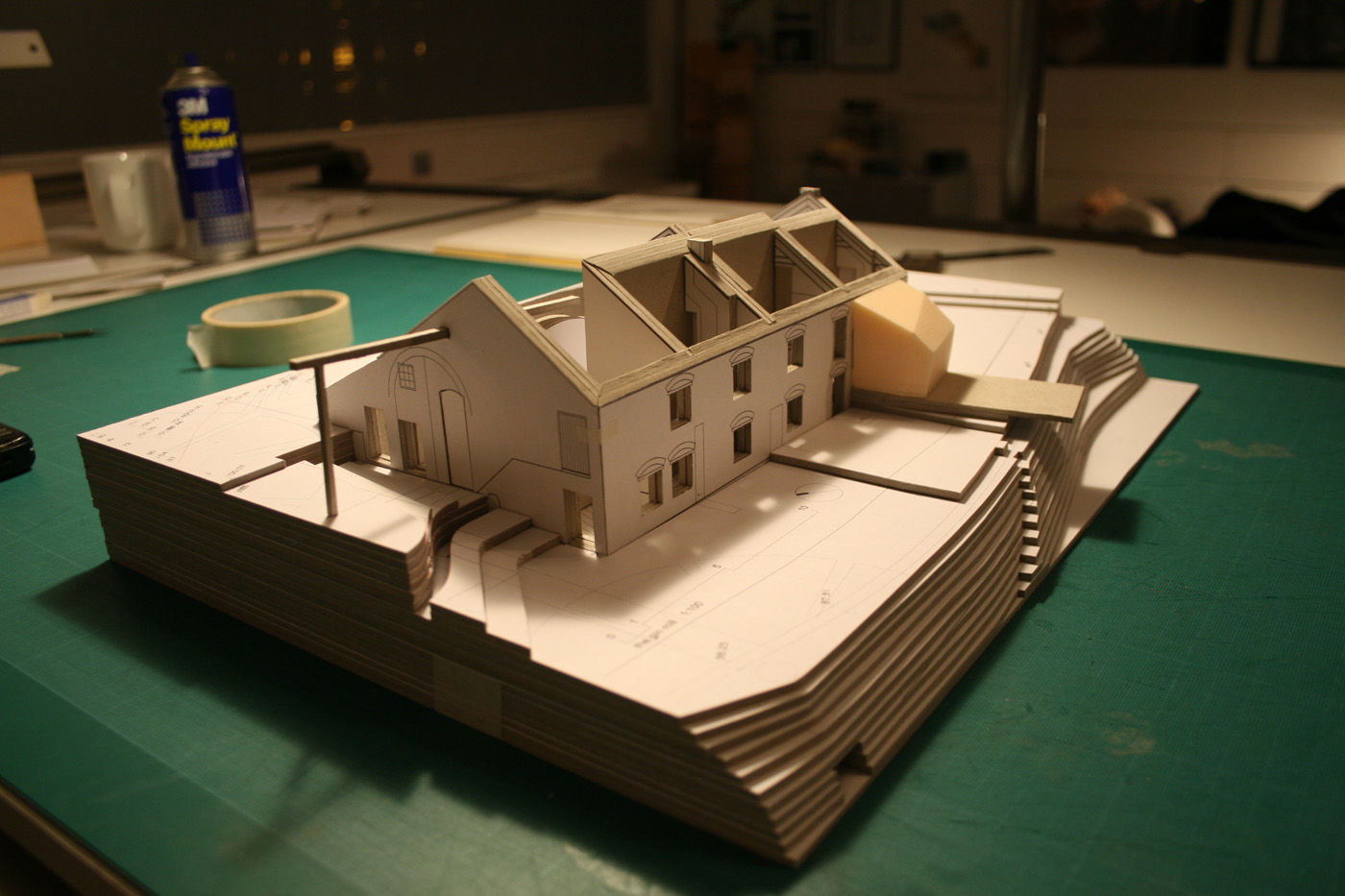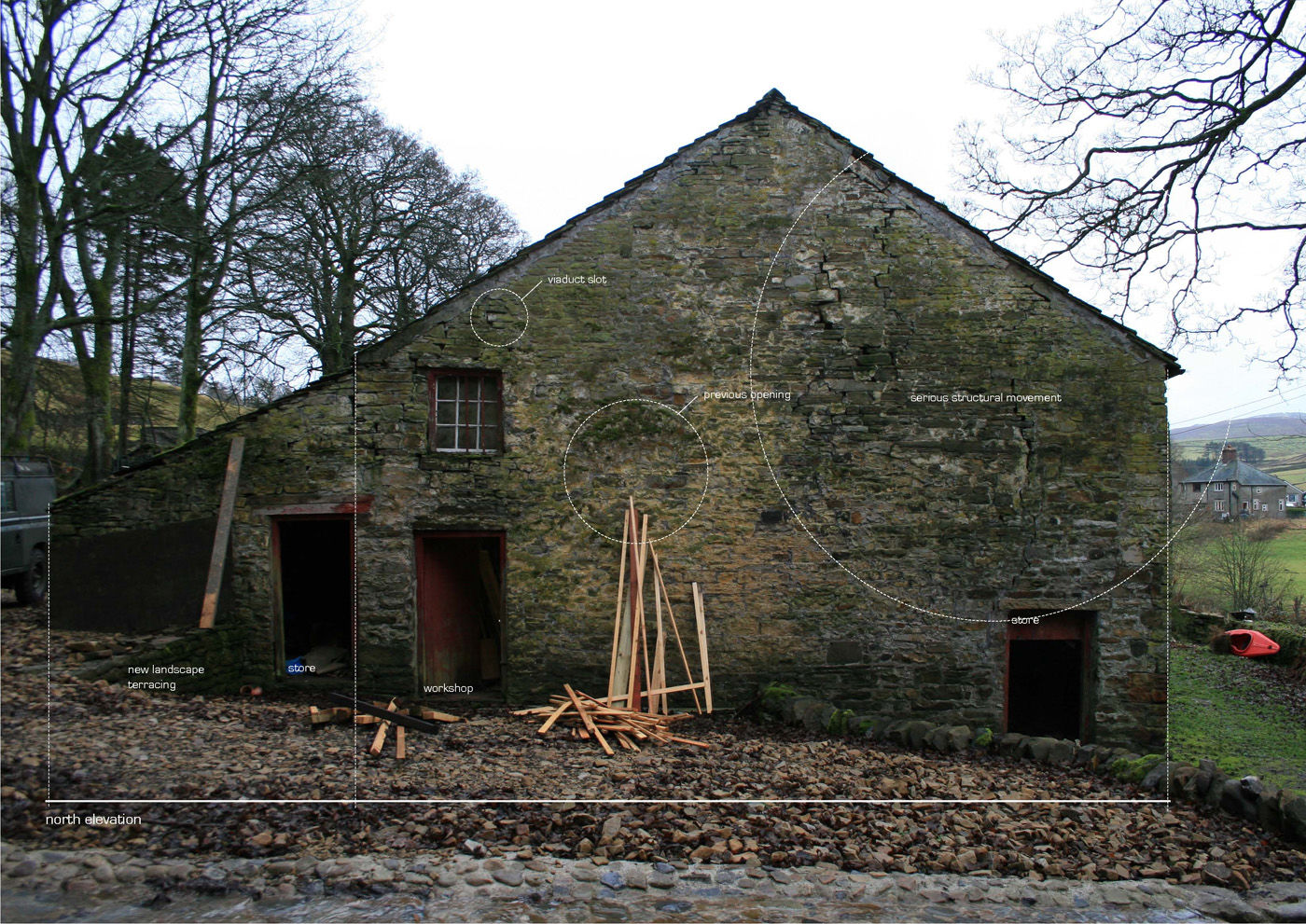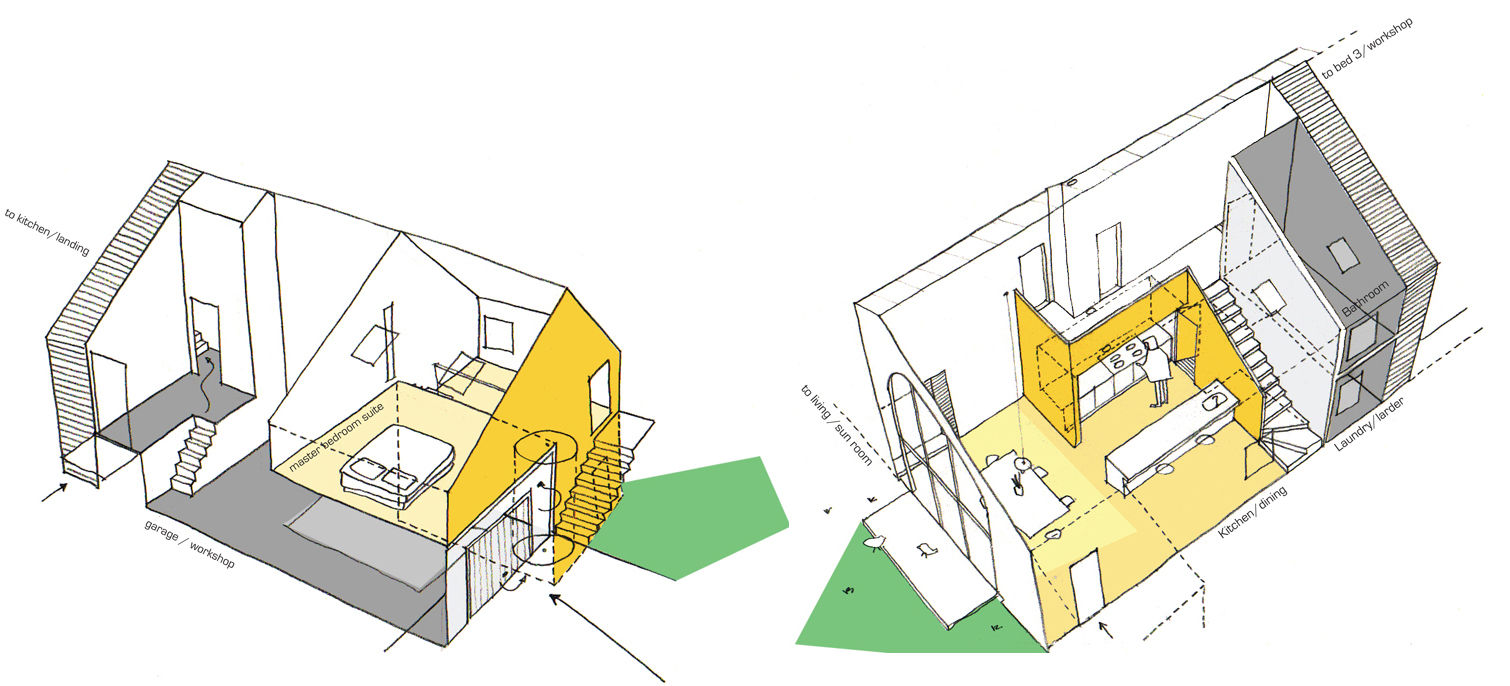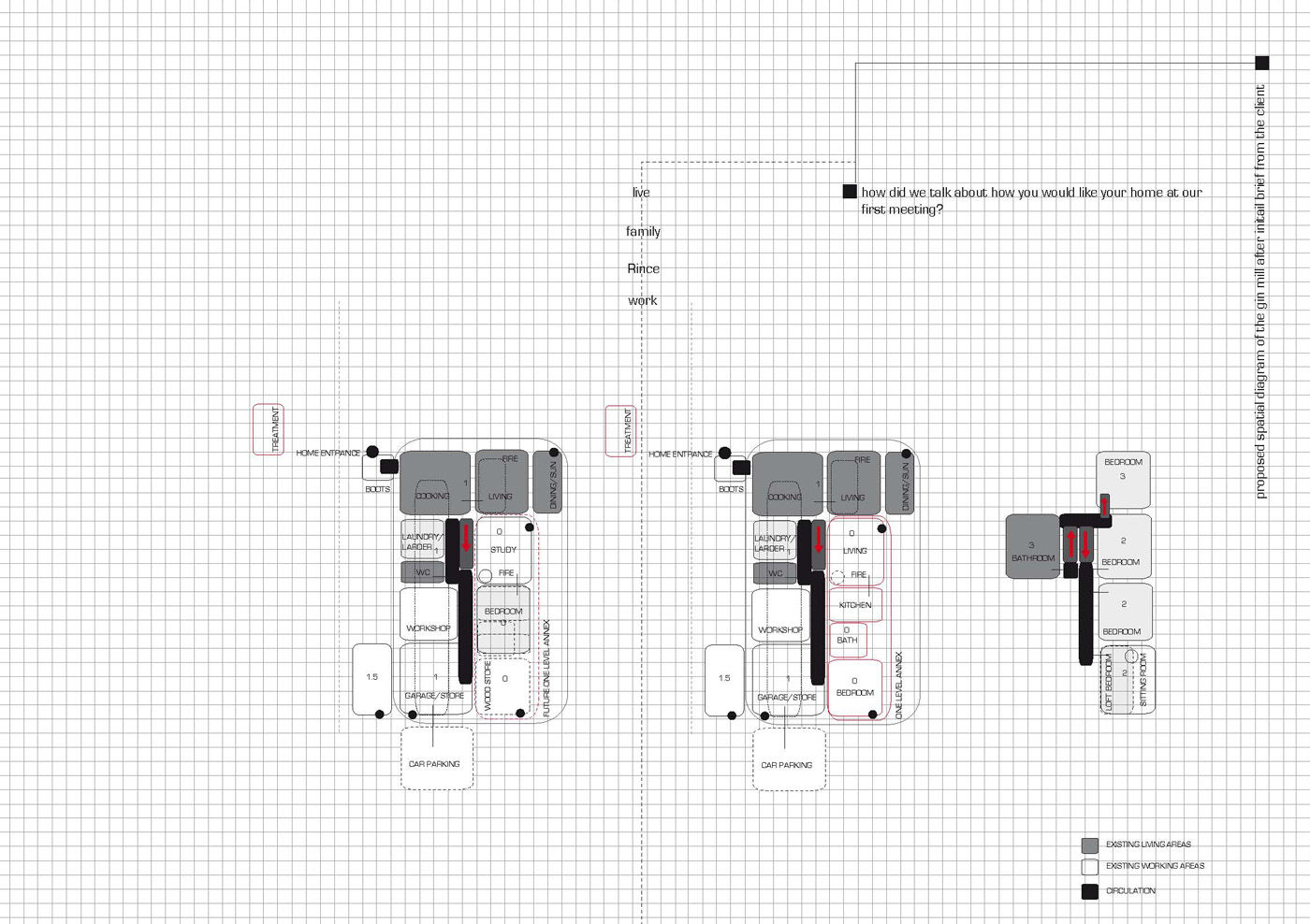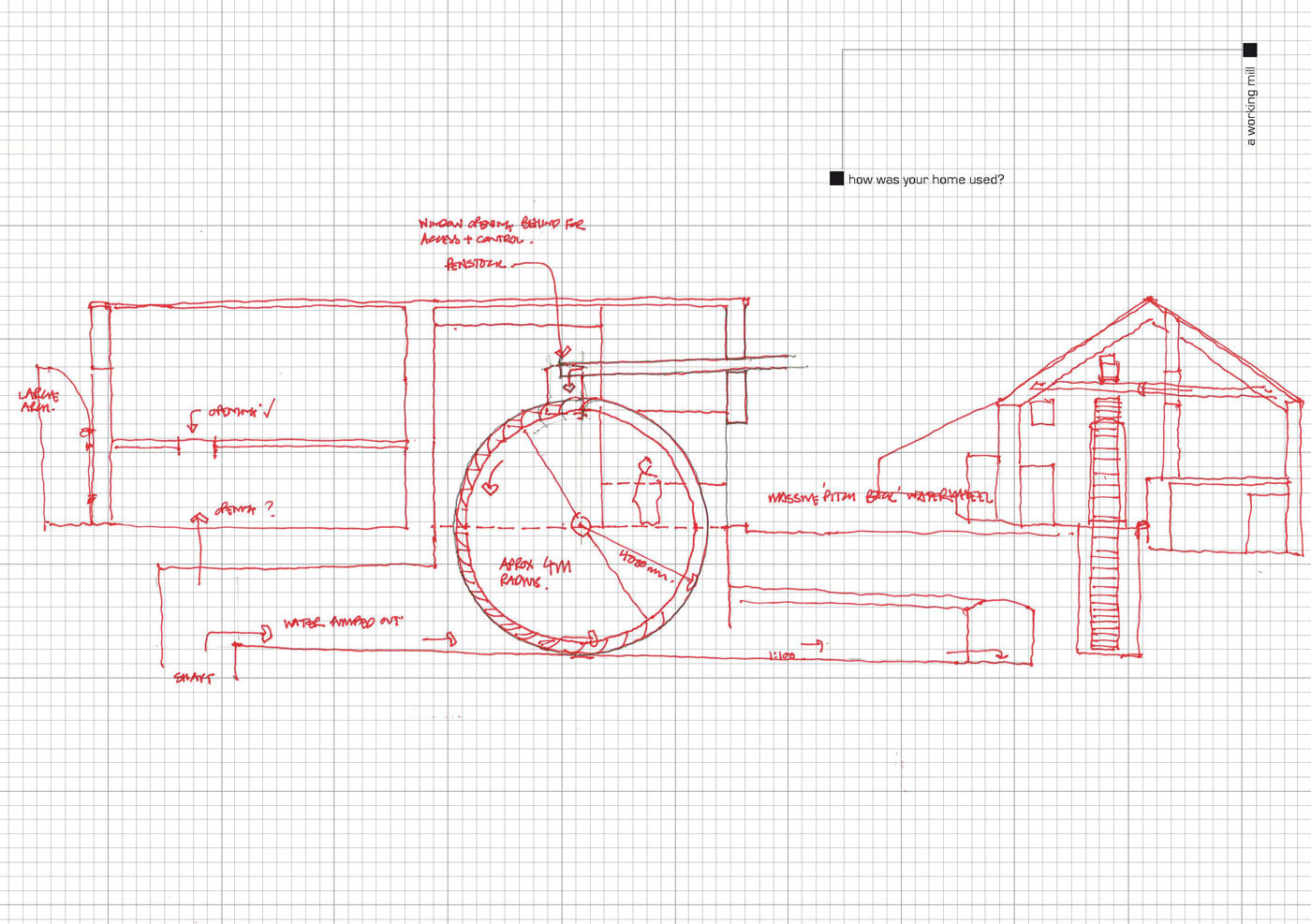Beldy Mill was reputedly first used to draw ore from a mine shaft that still exists below the building, and ore hearths were said to exist in the grounds. Later an attempt to build a subterranean lough or canal was made below the site and the shaft used to pump excess water from the works, powered by a large water wheel. Changing demands led to this wheel being modified to power a large corn mill around 1800.
The water wheel was a large pitch back overshot type some 8min diameter with culverted water supply entering the building at high level due to the topography.
A complex of beautifully built rubble stone tunnels exist below the building, interconnecting with the original mine shaft and outfall into the South Tyne River.
The building is constructed with largely solid rubble stone walls with some significant structural defects. This is a result of the roof structure spreading due to inadequate tie beams under the weight of the flagstone roof. With this in mind our proposal involved removing part of the roof and strengthening the trusses to rectify this condition.
Further works included the rebuilding of part of the gable and flanking wall, with the addition of a stone buttress to offer further stability before the roof was re-laid. Internally the proposal aspirated to rebuild a replica of the original waterwheel using the remaining mechanicals/structure to create a micro generation hydro scheme selling back to the grid.
The internal accommodation was to be reconfigured to offer a more passive environmental strategy, reopening a massive south facing arch to the main living accommodation. An additional feasibility was also undertaken to install an open loop heat pump running from the waters of the South Tyne river basin.
Photographs, sketches and model by Haverstock
